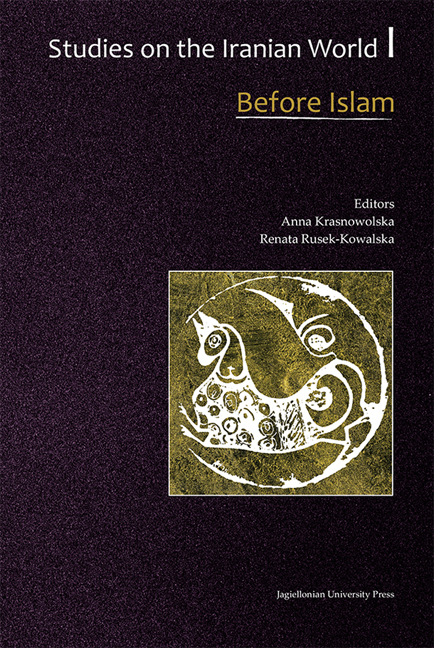Book contents
- Frontmatter
- Contents
- Foreword
- Linguistics
- The Old Persian Genitive. A Study of a Syncretic Case
- Nominal Compound Strategies in Middle Iranian Languages
- Alan Place-names in Western Europe
- Work in Progress: The Catalogue of the Buddhist Sogdian Fragments of the Berlin Turfan Collection
- Preliminary Remarks on Middle Persian ‹nc› in the Pahlavi Documents
- Literature
- Religion
- History
- Archaeology
Nominal Compound Strategies in Middle Iranian Languages
from Linguistics
Published online by Cambridge University Press: 12 January 2018
- Frontmatter
- Contents
- Foreword
- Linguistics
- The Old Persian Genitive. A Study of a Syncretic Case
- Nominal Compound Strategies in Middle Iranian Languages
- Alan Place-names in Western Europe
- Work in Progress: The Catalogue of the Buddhist Sogdian Fragments of the Berlin Turfan Collection
- Preliminary Remarks on Middle Persian ‹nc› in the Pahlavi Documents
- Literature
- Religion
- History
- Archaeology
Summary
SUMMARY
One of the interesting aspects of word formation is the study of compounding, especially the grammatical character of the elements of the compound and their semantic relations. It is also important to identify the most common type of compounds in a given language. The aim of this article is to investigate the nominal compound strategies in some Middle Iranian languages such as Middle Persian (a Western Middle Iranian language), Sogdian (an Eastern Middle Iranian language) and Bactrian (an Eastern-Western Middle Iranian language). The focus here will be on nominal compounds consisting of two elements. After analyzing the grammatical and semantic structure of compounds in each language, I will compare them to each other. Finally, similarities, differences and the most common strategies will be summarised.
INTRODUCTION
In recent years, various works have been published relating to Iranian names. While the series of ‘Iranisches Personennamenbuch’ is one of the most important works on this topic, there are also other articles published by different experts, such as Zimmer's article ‘Zur sprachlichen Deutung sasanidischer Personennamen’ (1991: 109–150) or Schmitt's ‘Iranische Namen’ (1995a: 678–690) and ‘Morphologie der Namen: Vollnamen und Kurznamen bzw. Kosenamen im Indogermanischen’ (1995: 419–427). In these materials, we find long lists of compounds. These materials give us an opportunity to study the structure of personal name compounds in Iranian languages. Besides personal names we can observe other kinds of compounds in Iranian languages. In the current study both personal name and non-personal name compounds are studied. As the personal name compounds possess distinct characteristics, I prefer to discuss them separately. In both of these groups, first, the grammatical characteristics of elements are identified and the most common form is introduced. Secondly, the compounds are classified according to the semantic relationship of the elements to each other. For this study of compounds I have chosen three Middle Iranian languages: Middle Persian, which is a typical Western Middle Iranian language; Sogdian, an Eastern Middle Iranian language and finally Bactrian, which belongs to the Eastern group of Middle Iranian languages, but which also possesses some characteristics of Western Middle Iranian languages. We will also discover the ways in which Bactrian is close to the Western languages in the features of its compounds.
- Type
- Chapter
- Information
- Studies on the Iranian World: Before IslamMedieval and Modern, pp. 31 - 50Publisher: Jagiellonian University PressPrint publication year: 2015



